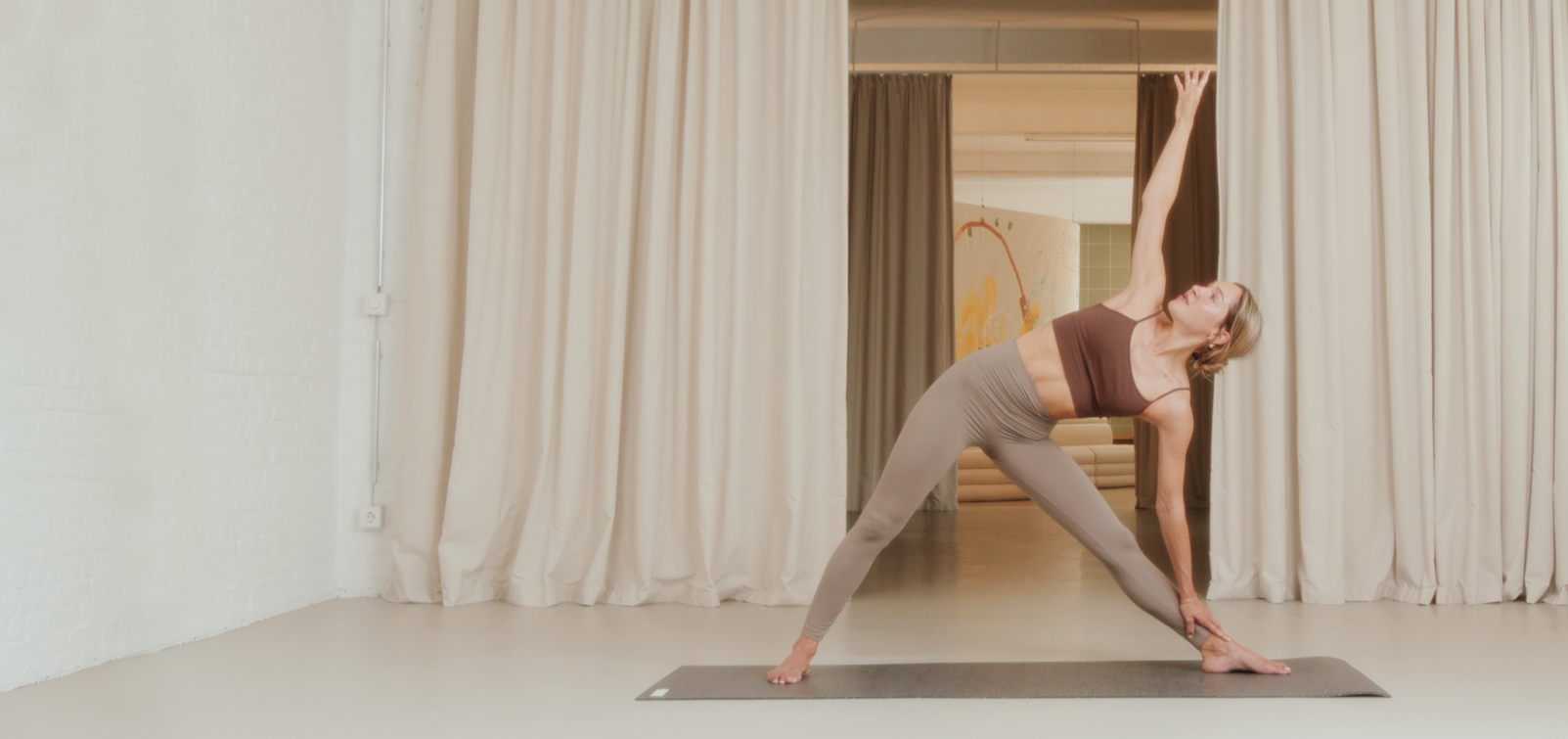One of the criteria that is often considered when buying a new yoga mat is slip resistance. If you have ever slipped on your yoga mat during a nice flow with wet hands or feet, you probably know what we are talking about. In yoga you should be able to concentrate on your practice, your breath, your body, generally speaking on yourself. And not, that you don’t slip on your mat. If this appeals to you, then a non-slip yoga mat can really expand your yoga practice.
The non-slip yoga mat – hejhej-mat
We have been developing the hejhej-mats for a very long time and have discussed and tested the criterion of slip resistance with many yoga teachers. At first look, the hejhej-mat may seem a bit slippery for some people. But after the first downward-facing dog or at the latest after the first practice, everyone was really happy with the slip resistance of the hejhej-mat. In a normal yoga practice, the slip resistance remains even with sweat. Should you ever practice extremely sweaty yoga, we would recommend that you place a small towel under your hands. Then you will also have the maximum slip resistance there. You can easily wash the towel after your Yoga practice.
Sustainability through closed porous surface
In order to develop a maximum non-slip and sustainable yoga mat for you, we have therefore spent a long time working on the surface of our hejhej-mat. The hejhej-mat gives a very good grip due to its textured surface. We have also consciously decided on a closed-pore surface. This means that no moisture (sweat) can soak into the mat. This speaks very strongly for the quality, hygiene, durability and thus also our definition of sustainability. There are mats that soak up the sweat – but this is definitely not good. Moisture makes the material brittle and over time it dissolves or wears out. The surface is also a perfect breeding ground for bacteria and fungi due to the moisture and sweat. Dirt, deposits and bacteria can not only produce an offensive smell, but can also pose significant health risks, including skin rashes and infections.
This is one of the reasons why we have decided to use recycled foam residues rather than natural products such as natural rubber. This means that we use recycled material for our non-slip yoga mat and therefore do not have to break down or use new raw materials, even if they are natural.
Why we have decided against a yoga mat with natural materials
The demand for natural materials is constantly increasing, therefore also the cultivation, which naturally requires an enormous amount of space. Because of this, for example, a lot of land has been deforested in order to be able to cultivate large monoculture areas of natural materials. Monoculture means that only one crop is planted in a field over several years. This is very bad for biodiversity and soil health, as the land is more susceptible to pests and therefore requires more fertilizer. We have decided not to support this! Read more about why we decided against natural rubber here.
Why our hejhej-mats operate according to the circular economy
Wouldn’t it also be fantastic if the materials used could also be returned to a cycle? We developed exactly with this closed-loop idea in mind and designed our mat so that we can recycle our hejhej-mats 100% at the end of the product life cycle. Mats with many different materials, such as a mix of recycled plastic and natural rubber, makes it almost impossible to separate the materials. This type of mat can therefore no longer be recycled. Our non-slip yoga mat can be completely returned to the cycle and we can even make new yoga mats from it. Please read again one of our first articles and find out why we developed our hejhej-mats with the closed-loop approach.
Last tip from yoga teachers
Slip resistance is a big buzzword among yogis. There always seems to be a quest for an even more non-slip yoga mat. Slip resistance is almost a myth – even though any type of surface simply gives way for purely physical reasons after a certain moisture/wetness. We have also talked a lot about this with yoga teachers and they are also very often confronted with the question of slipping. They said to us that one should not get too obsessed with this topic and simply follow a very light and extremely effective tip:
During the yoga practice really pay attention to put a lot of pressure on the complete hands and feet. Spread your fingers as much as possible to distribute the pressure evenly over your hands. Also, lift the toes once all and then gradually starting from the little toe, lower all toes onto the mat one by one, and with as much distance as possible. This way your hands and feet have the largest possible contact surface and therefore a better grip on your yoga mat.
We hope that we could explain a little bit the background and wish you a lot of fun with your Yoga practice on your hejhej-mat!

Photo credits of both pictures Julia Stiller




